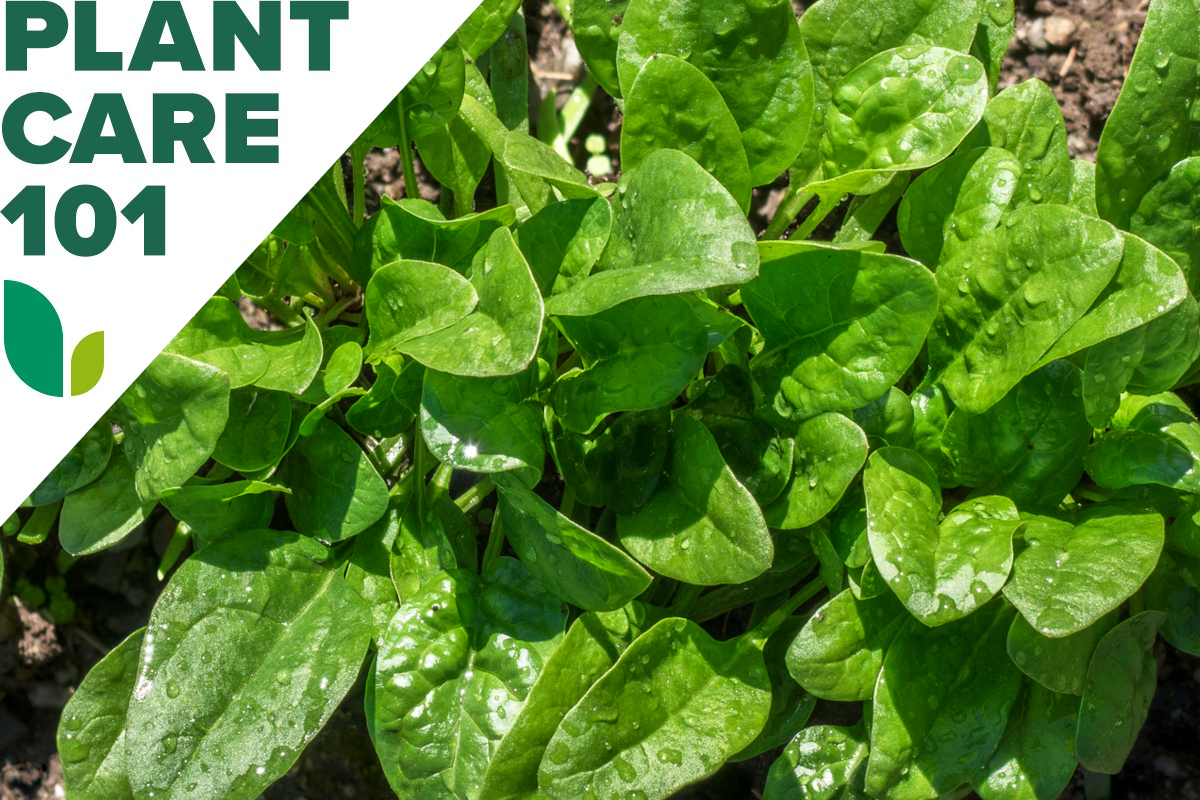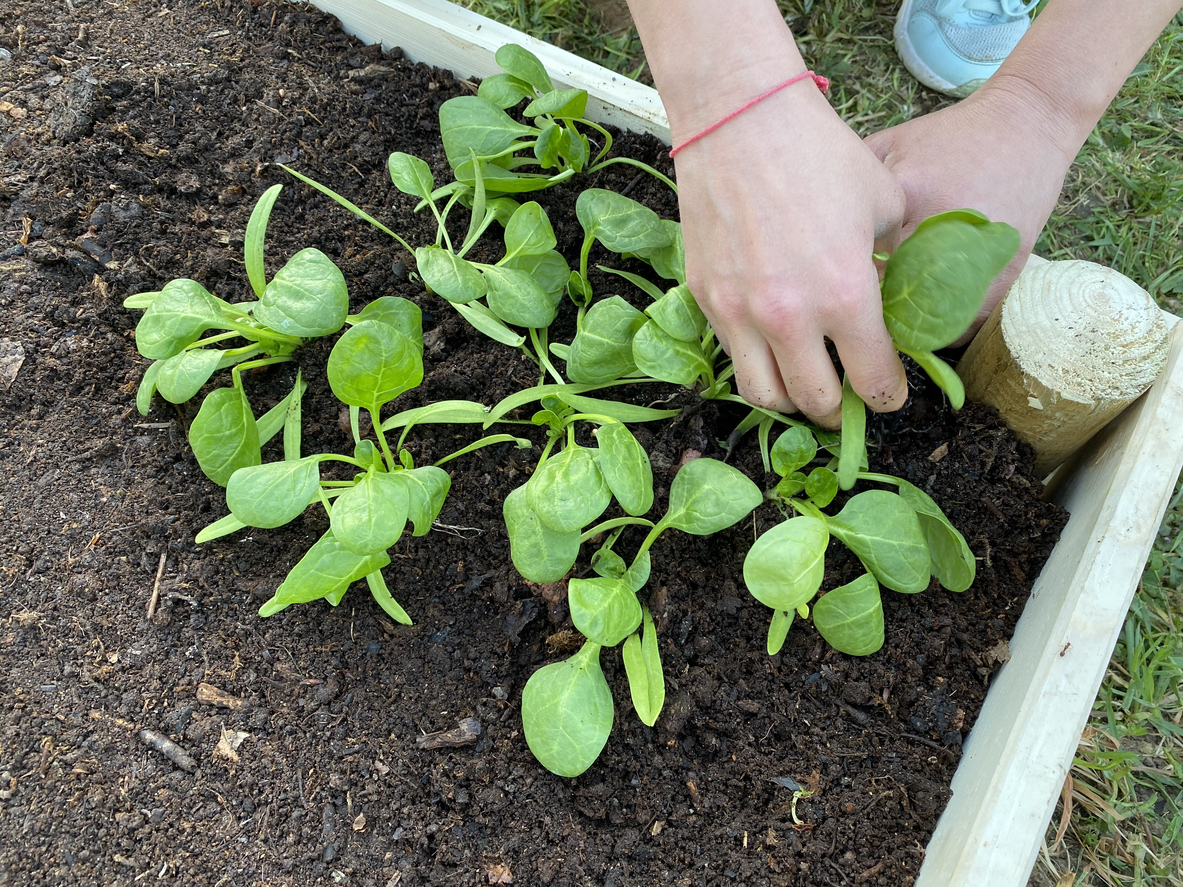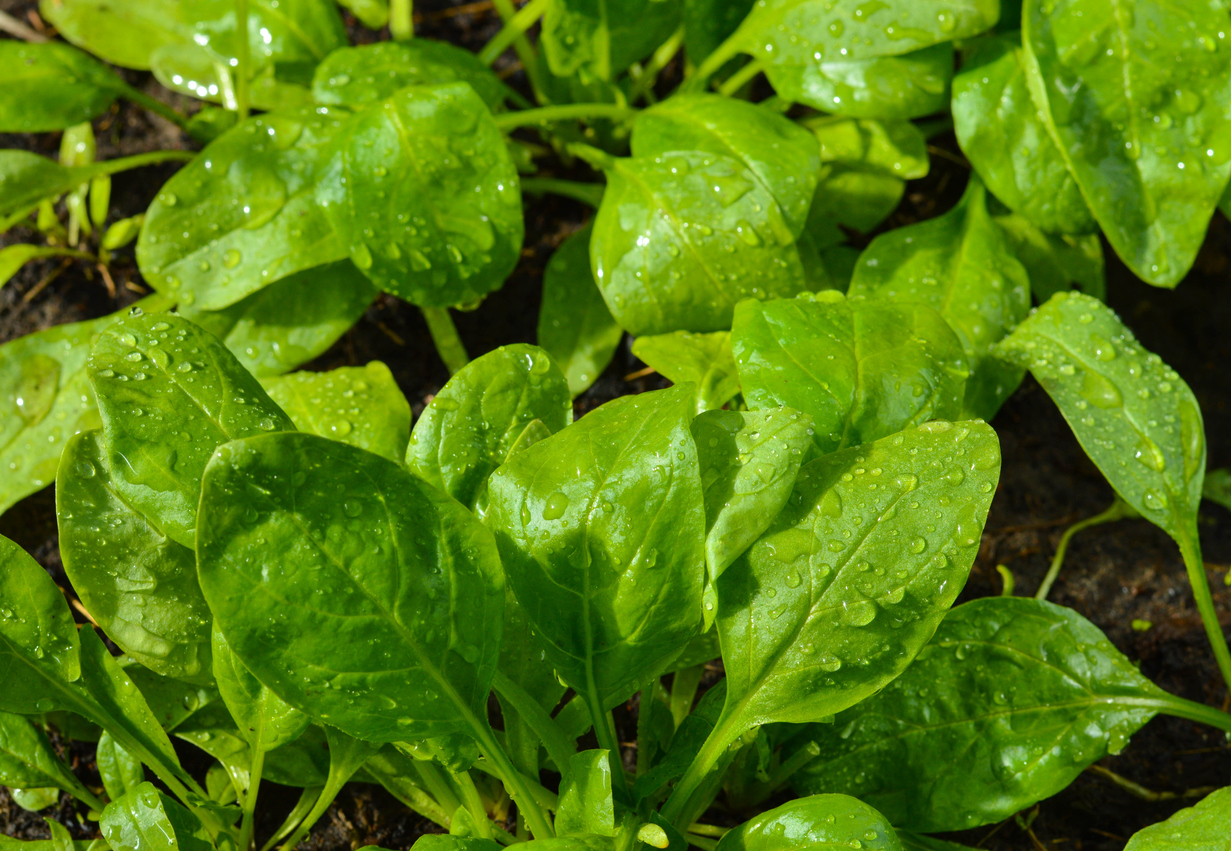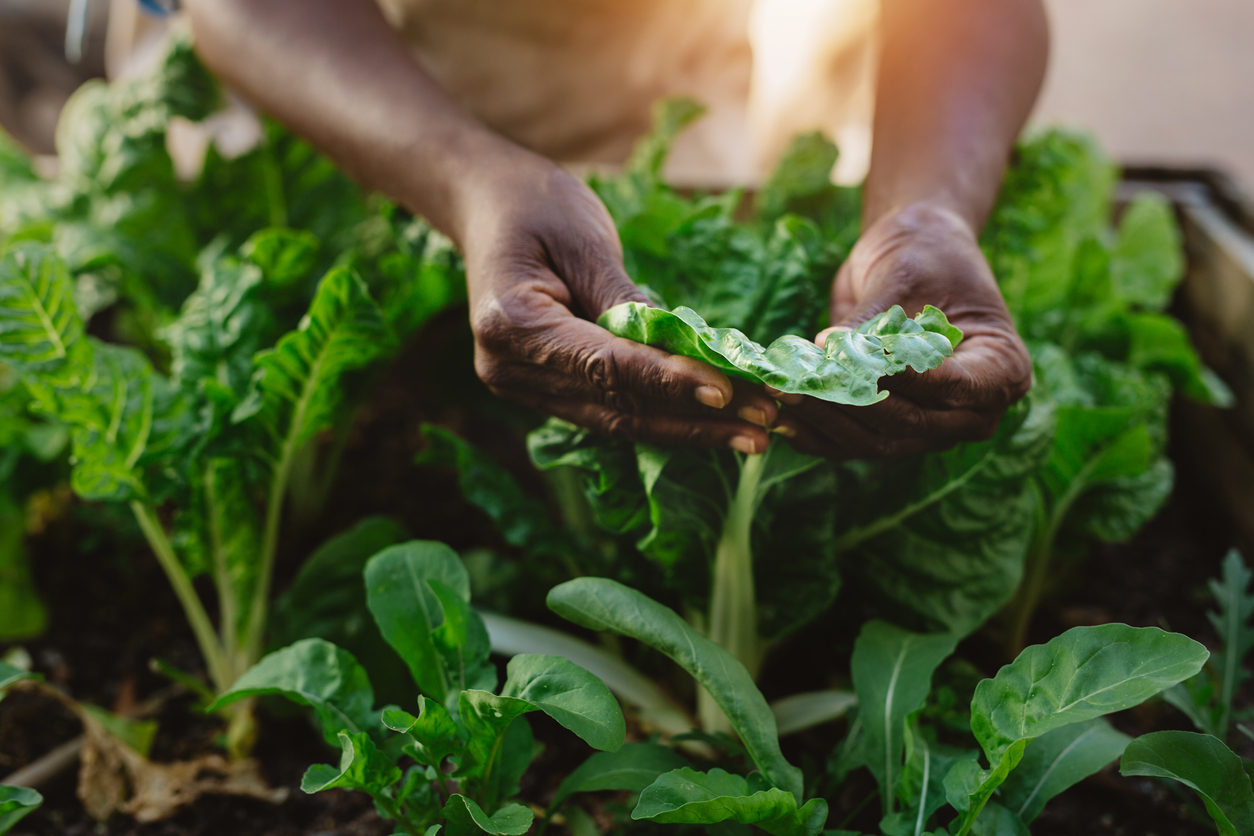

We may earn revenue from the products available on this page and participate in affiliate programs. Learn More ›
When planning how to grow spinach in your garden, keep in mind that this leafy, nutrient-rich vegetable matures quickly in 1 to 2 months. However, it prefers cool days and often will bolt (flower and go to seed) abruptly once the hours of daylight increase and temperatures rise in early summer.
For the best spinach growing conditions, then, sow this leafy green in early spring or plant it in August for an autumn harvest. Since spinach will tolerate temperatures down to 20 degrees Fahrenheit, you might even be able to raise a winter crop if you supply a hoop house or similar cover to protect it.
RELATED: 4 Things to Know About Gardening Late in the Season
Growing Spinach at a Glance
Common Name: Spinach
Scientific Name: Spinacia oleracea
Hardiness Zone: Annual
Soil: Fertile, well draining
Light: Full sun to light shade
Water: Plentiful
Food: High-nitrogen fertilizer
Propagation: Seed
Safety: Edible but contains oxalic acid
Spinach Characteristics
The spinach plant only grows 6 to 12 inches tall, sprouting a rosette of green leaves that are generally round or oblong, but they can be arrow-shaped in Asian varieties. A stalk of tiny greenish-yellow flowers will eventually shoot up, with some spinach plants producing male flowers and others female. Once that happens, the leaves usually stop growing and turn bitter and inedible.
Smooth spinaches, also called flat-leaved spinaches, have (true to their name) unwrinkled leaves. Meanwhile, savoy spinach cultivars boast thicker, crinkly foliage. Although more vigorous than smooth spinaches, they are also harder to clean due to their texture and low-growing nature. Combining the characteristics of the other two types are semi-savoy spinaches, which have only slightly crinkly leaves that reach higher above the ground than savoy spinach foliage.
Although they’re easy-to-grow vegetables, many spinach cultivars bolt once days become 14 hours long and temperatures rise above 75 degrees Fahrenheit.
Recommended Spinach Varieties
- Bloomsdale Long Standing: This open-pollinated savoy heirloom grows nearly 1 foot tall, matures in 40 to 48 days, and is reportedly bolt-resistant.
- Olympia: Also slow to bolt, this smooth hybrid grows 10 inches tall and matures in 45 days.
- Space: One of the few cultivars recommended for summer sowing, this “slightly savoyed,” slow-bolting hybrid matures in 37 to 51 days.

Planting Spinach
Schedule spinach planting for either early spring or late summer. Grow it in containers or garden beds, ensuring it has fertile, well-draining soil.
When is the best time to plant spinach?
The spinach plant is an annual vegetable. When growing spinach, sow the seeds as soon as the soil in the garden can be worked in spring, up to 6 weeks before the last frost, when the soil temperature is at least 45 degrees Fahrenheit. Alternatively, sow them in late summer 6 to 8 weeks before the first autumn frost.
Where can spinach grow?
Spinach grows most rapidly in full sun and fertile, well-draining soil with a pH between 6 and 7, especially in spring in a raised bed that dries out quickly. However, spinach is a vegetable that can also grow in light shade. Peas, beans, and radishes make good spinach companion plants.
How do you plant spinach?
Although it’s best to plant spinach early, wait until the soil dries out enough to be crumbly rather than sticky.
- Sow spinach seeds directly into the garden, planting them ¼ to ½ inch deep, using about 12 to 15 seeds per foot of row.
- After the seeds sprout in 7 to 10 days and grow to 2 inches, thin the seedlings to stand at least 3 to 6 inches apart in rows at least 1 foot apart.
- Plant new seeds about every 2 weeks until the weather warms.
Can you grow spinach in containers?
According to North Carolina Extension, spinach can grow in small 1-gallon containers as shallow as 4 to 6 inches deep. However, deeper pots will provide more legroom for the plant’s sometimes long taproot. When growing spinach in pots, give it a cool, east-facing location where it receives 3 to 5 hours of morning sunlight per day.
RELATED: What Is Companion Planting and How to Use It in Your Home Garden
Watering Spinach
Make sure that spinach plants receive at least 1 inch of water per week from either rainfall or irrigation. Just be aware that dried-out soil is one factor that can cause spinach to bolt. Therefore, keep the soil evenly moist, but not soggy, at all times. Mulching 3 to 4 inches of grass clippings or straw can help maintain an optimal level of dampness while also suppressing weeds.

Fertilizing Spinach
Because it is grown solely for its greens, spinach can thrive on a nitrogen-only plant food such as blood meal (12-0-0). Use 1 to 2 tablespoons for each square foot of ground and dig it into the upper 3 inches of your soil to prepare a large garden bed. For spinach plants in containers, mix 1 to 2 teaspoons into each gallon of potting soil. Reapply the blood meal as a side-dressing of 1 to 2 teaspoons once per month for as long as the plants are growing—and putting out greens rather than flower stems.
RELATED: 15 Superfoods That Are Easy to Grow Yourself
Propagating Spinach
When growing spinach from seed, sow it directly into the garden soil early enough that it will mature before summer heats up. For the highest germination rate, purchase fresh seeds, since they don’t retain viability for long. Plant them ¼ to ½ inch deep, spreading 12 to 15 of them along each foot of row.
Although you can sow spinach seeds at lower temperatures, they germinate best in conditions between 55 and 65 degrees Fahrenheit—within 7 to 10 days. If you wish to save seeds from open-pollinated types, keep in mind that only female plants produce seeds.
Safety Considerations
Raw spinach contains oxalic acid, which can potentially be harmful to people who suffer from kidney stones and digestive problems. Fortunately, cooking spinach eliminates most of the oxalates. Something to note is that savoy spinaches contain less of those than flat-leaf types do.
Because E. coli can infect leafy greens that come into contact with manure, avoid using composted manure in your garden unless you are sure that it is completely composted. And be sure to clean your leafy greens thoroughly under running water before you eat them.
Potential Pests and Diseases
Leaf miners burrow through spinach leaves, leaving transparent trails on the foliage. Since they feed inside the leaves, they can be difficult to control. Try planting radishes between rows of spinach so that the pests will be attracted to their leaves instead. Alternatively, keep your spinach plants topped with row cover to prevent flies from laying their eggs on the foliage.
Large holes in spinach leaves are probably caused by slugs, which can be eliminated with slug bait scattered around young plants.
RELATED: Frost Coming Your Way? What to Do With Veggies in the Garden

Harvesting Spinach
Spinach matures sooner than most other vegetables, often within 6 weeks. The leafy greens are relatively easy to harvest and store for quick use in the kitchen.
When is the best time to harvest spinach?
When considering how to harvest spinach, it’s fine to remove individual leaves periodically. Just wait until the plants have at least six true leaves; you also can harvest the entire plant once it matures. The first option provides a continuing harvest, while the second provides a larger harvest all at once.
How do you harvest spinach?
Cut spinach during the coolest part of the day, usually early morning.
- If you prefer to “pick” the entire rosette, use a clean, sharp knife to cut it off just above ground level.
- Should you opt for a continuing harvest, cut off the outermost leaves on a plant when the stems and leaves reach 3 to 6 inches, leaving the smaller inner ones in place to mature further.
- Make sure you harvest all the spinach before the plants send up stalks.
How do you store spinach?
Wash the greens thoroughly under cold running water and store them in a zippered freezer bag in the high-humidity crisper drawer of your refrigerator. They may keep for up to a week. If you harvest too much spinach to use right away, you can safely freeze the excess in an airtight freezer bag.
Looking for more fast-growing vegetables? Check out our guides on growing green beans, kale, and microgreens.
